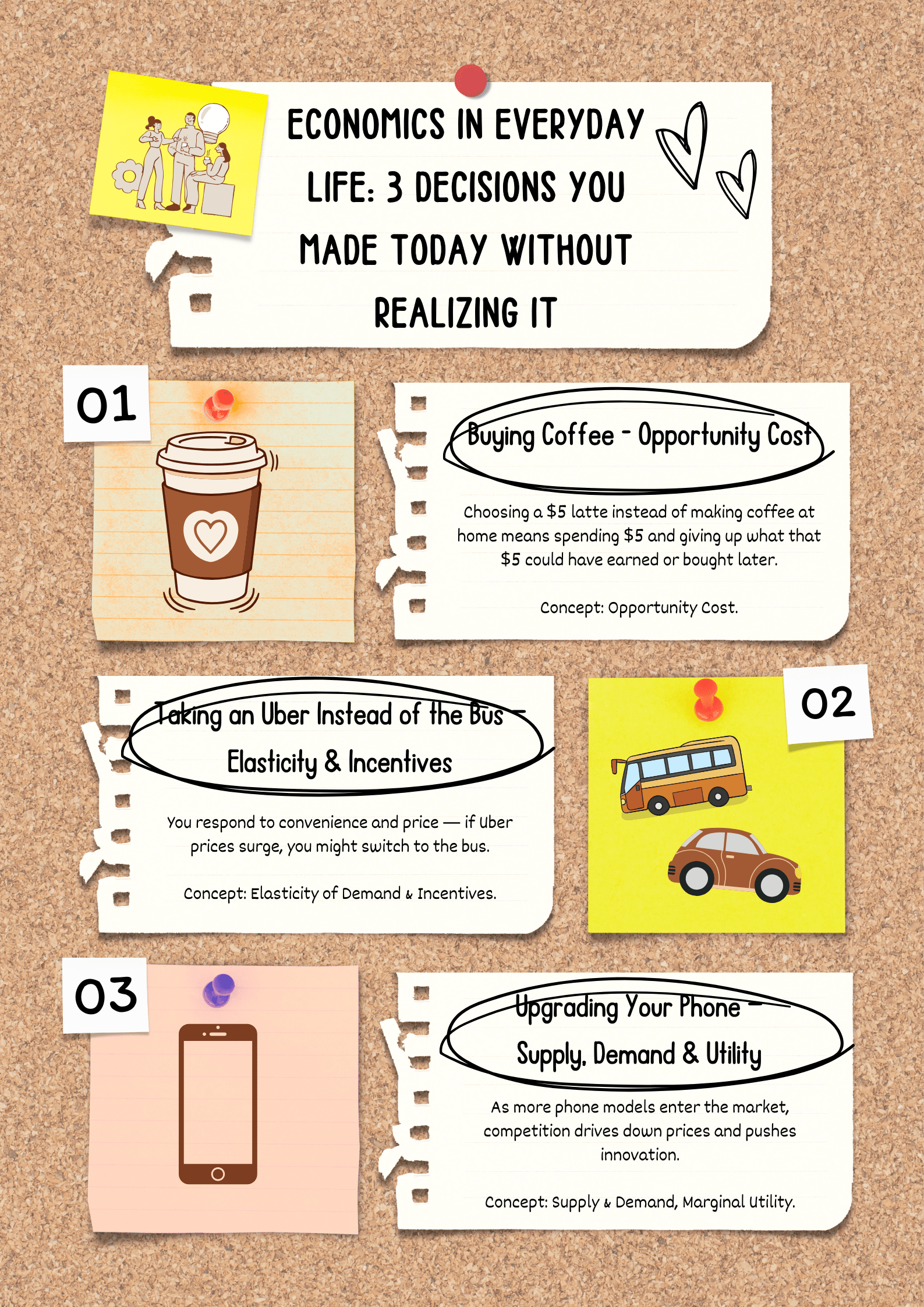
For many of us, the word “economics” conjures up images of complex charts and equations. But what if we told you that economics is simply the story of decisions—the decisions we make every day, the choices companies make, and the big-picture policies that shape our world? At AspirePath Tutors, we believe the best way to understand economics is to see it in action.
As Nobel laureate Paul Samuelson once said, “The first lesson of economics is scarcity: there is never enough of anything to fully satisfy all those who want it. The first lesson of politics is to disregard the first lesson of economics.” This powerful quote encapsulates the core challenge of economics: managing limited resources in a world of unlimited wants.
Let’s explore some key economic concepts through real-world examples, from products you know to moments in U.S. economic history.
The Small Picture: Microeconomics in Your Daily Life
Microeconomics is all about the choices of individuals and firms. Think about the last time you went grocery shopping. You were a microeconomic agent!

Macroeconomics zooms out to look at the entire economy, focusing on issues that affect us all.
Understanding these economic concepts can be challenging, but they provide a powerful lens through which to view the world. At AspirePath Tutors, we don’t just teach the theory; we help you connect it to the real world. Our college tutoring approach uses personalized examples and strategic guidance to help you master core principles and apply them to complex problems.
Whether you need college economics help to ace your next exam or want a deeper understanding of business tutoring concepts, our expert tutors are here to help you navigate the intricate world of economics and achieve academic success.
Let AspirePath Tutors help you master the principles that power our world.
Top 5 Economic Concepts Every College Student Should Know
Get this one-page cheat sheet — a perfect quick reference for your next exam!